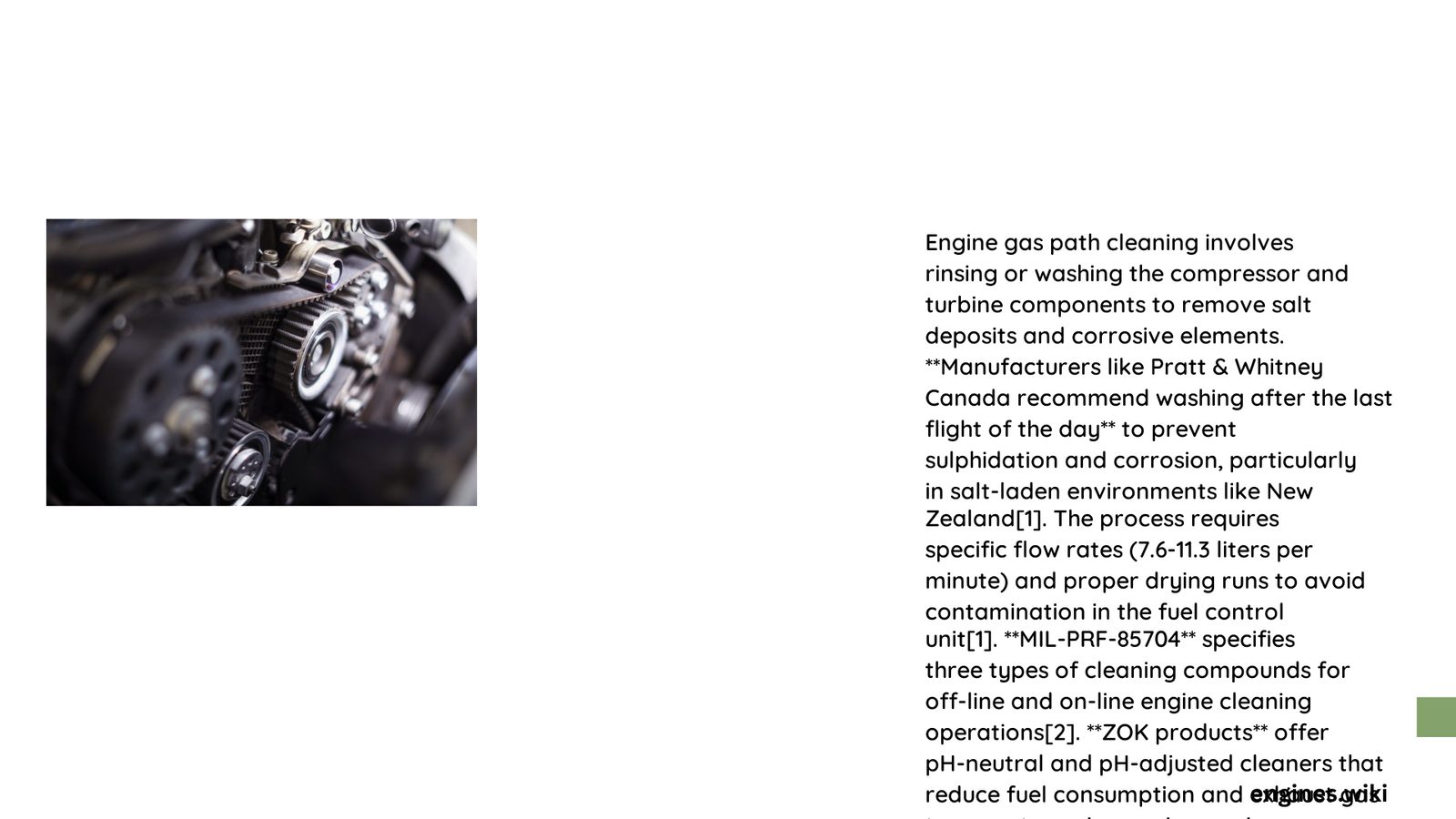Engine gas path cleaning is a critical maintenance procedure that removes contaminants, deposits, and fouling from critical engine components, ensuring optimal performance, fuel efficiency, and longevity. By systematically addressing accumulated debris in compressor blades, combustion chambers, and turbine sections, operators can restore engine power output, reduce emissions, and prevent potential mechanical failures.
What Makes Engine Gas Path Cleaning Essential?
Why Do Engines Accumulate Contaminants?
Engines operate in challenging environments where dust, salt, oil particles, and other microscopic debris continuously impact internal components. These contaminants gradually:
- Reduce aerodynamic efficiency
- Increase fuel consumption
- Compromise thermal performance
- Create potential mechanical stress points
How Do Cleaning Methods Differ?
| Cleaning Method | Pressure Range | Primary Application | Effectiveness |
|---|---|---|---|
| Ingestive Cleaning | 5-100 PSI | Compressor Blades | High |
| Abrasive Cleaning | 5-1000 PSI | Cooling Passageways | Moderate-High |
| Chemical Wash | Variable | Comprehensive Removal | High |
What Are the Primary Cleaning Techniques?
On-Crank Cleaning Procedure
- Preparation
- Stop engine completely
- Disconnect power systems
-
Prepare specialized cleaning solution
-
Injection Process
- Introduce cleaning chemicals
- Allow chemical interaction with contaminants
- Rinse thoroughly with clean water
Online Cleaning Strategy
- Performed during engine operation
- Uses atomized water/cleaning fluid
- Minimal operational interruption
- Continuous contamination management
Technical Considerations for Effective Cleaning

What Factors Influence Cleaning Effectiveness?
Critical parameters include:
- Ambient environmental conditions
- Engine operational history
- Accumulated contaminant types
- Specific engine design characteristics
How Often Should Cleaning Occur?
Recommended cleaning frequencies:
- Dusty Environments: Every 250-500 operational hours
- Standard Conditions: Quarterly or semi-annually
- High-Performance Engines: Monthly assessments
Performance Restoration Metrics
What Benefits Can Be Expected?
Potential performance improvements:
- Fuel efficiency restoration: Up to 100%
- Power output recovery: 3-7%
- Emission reduction: 10-15%
- Maintenance cost savings: 20-30%
Advanced Cleaning Technology
What Emerging Technologies Exist?
- Nanotechnology-based cleaning solutions
- Laser-assisted contamination removal
- Advanced robotic inspection systems
- AI-driven predictive maintenance algorithms
Safety and Procedural Recommendations
What Precautions Are Necessary?
- Use manufacturer-approved cleaning agents
- Follow strict safety protocols
- Maintain detailed maintenance logs
- Employ certified technical personnel
- Utilize specialized diagnostic equipment
Cost-Benefit Analysis
Is Engine Gas Path Cleaning Economically Viable?
- Initial investment: Moderate
- Long-term savings: Significant
- Potential downtime: Minimal
- Performance preservation: Substantial
Conclusion
Engine gas path cleaning represents a critical maintenance strategy for preserving engine performance, efficiency, and longevity. By implementing systematic, scientifically-driven cleaning protocols, operators can significantly extend equipment lifecycle and optimize operational capabilities.
